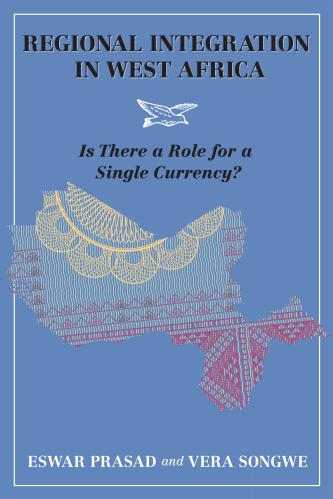Since 2018, eight African countries have launched initiatives to create government-controlled cryptocurrencies, otherwise known as central bank digital currencies (CBDC). Coming in the midst of a fintech boom that has seen investments in African startups surge from $130 million to $2.3 billion, a mammoth 20-fold rise, the effects of greater government involvement in the digital payment space are of interest to everyone—investors, banks, and consumers alike.
African government forays into digital payments at the consumer level, though, have not historically fared well. Ghana’s eZwich, launched to much fanfare as the world’s first central bank created “biometric money,” today has less than 10 percent population coverage and has seen a 91 percent annual drop in use for purchases. Kenya’s Huduma Card does only marginally better at 12.5 percent population coverage (and more than 40 percent of issued cards have still not been collected).
What they might lack in savvy consumer apps, African governments make up for in the more boring enterprise-scale platforms connecting central banks, commercial banks, and big corporations. The Nigerian Interbank Settlement System (NIBSS), for instance, saw Electronic Fund Transfer transaction values increase by 50 percent in 2020, while the number of transactions recorded an even more mindboggling growth of 77 percent (Figure 1).
Figure 1. Government-built platforms facilitate soaring payment flows in Nigeria
 Source: NIBSS (2021).
Source: NIBSS (2021).
No lessons learned
This is why it is a pity that the national crypto projects announced since 2018 seem to be following the historical script of making the government the digital banker to the masses. The failure of e-Dinar in Tunisia—after its highly promising 2015 launch—and Senegal’s eCFA’s flop should have clearly reinforced that African governments do much better in connecting than serving.
That the lessons of Ghana’s eZwich, Kenya’s Huduma Card, and Botswana’s Poso Card did nothing to mellow the Central Bank of Nigeria’s consumer-payments ambitions for its e-Naira reminds us yet again of how weak cross-border learning in Africa is. Even after its disastrous entry (including being kicked off the Google Play Store for bad reviews and serious stagnation after readmission), the e-Naira is still being sold as a retail wallet for the masses.
The pull of the paternalistic state
The biggest justification for government-built consumer wallets revolves around the idea of banking the unbanked. As far back as 1987, theorists like James Tobin had framed the issue of government-enabled universal banking as a technology problem.
Variants of the argument have continued to evolve. They now include twists such as a fear that should the government fail to interfere, the digitalization of money would also imply a privatization since cash will be reduced to electronic entries in corporate-controlled digital wallets.
The growth of direct cash transfers as a path to modernizing the welfare state—heavily promoted by international NGOs and foundations—has also been cited as necessitating government control of the retail end of disbursements.
Careful study however shows that with a large number of private providers keen to compete and serve as vendors to the government, the idea that government control is the only way to advance policy is as quaint as the belief in some Canadian provinces that regulated gambling only makes sense when the government owns the casinos.
Global digital financialization
The privatization of money does have one interesting angle: the nexus between monetary digitalization and financial globalization.
The enterprise-level bank-to-bank and payment systems connectivity platforms that African governments seem on the whole to have managed well sometimes crisscross national borders and thus increase the area for private fintech innovation. Senegal’s wave saw its subscriber base explode to nearly 5 million partly because central banks and commercial banks across French-speaking Africa have been networking their national payment switches. WAEMU, for instance, now runs sophisticated “real-time gross settlement systems” that interlink several countries and private banks.
Thus, when the Swedish government muses about how digitalization may be the only chance its low-volume, isolated currency—the Krona—avoids annihilation by corporate-owned multinational digital currencies (such as so-called “stablecoins”), the plight of many African national currencies comes into focus. Because Sweden has a GDP nearly equal to West Africa’s 15 countries combined, concerns about marginalization due to private multinational wallet operators cornering the digital money supply hit a raw nerve in Africa.
Digital seigniorage and the current balance of power
The quantifiable benefits that may accrue to central banks in their quest to control more of the fintech ecosystem are called “digital seigniorage.” The key idea here is not to argue that states and central banks want to issue e-money to offset the losses that will result from a switch from paper currency, which they completely control in the present day, to digital wallets owned by the private sector. Rather, it captures any and every conceivable monetary benefit a government anticipates from controlling e-money issuance and circulation at multiple levels of the financial system—from the interbank domain to the retail-consumer end.
In today’s conventional financial system, the commercial banks at home and abroad coordinate through systems like SWIFT to fuel the bulk of economic globalization. Forex trades, commodity trades, and even interpersonal remittances are heavily dominated by networks of mostly private correspondent banks around the world.
Central Banks in Africa in turn dominate the domestic payment systems in their countries through their control of the enterprise-level payment infrastructure and settlement systems. So far, this balance of power has held very well. The emergence of cryptocurrency and its heavy abridgement of settlement systems that respect jurisdictional boundaries, however, threaten to fuse the domestic and international realms, thereby unsettling this equilibrium.
African central banks, like many others elsewhere, have generally reacted by banning crypto. Through universal digital currencies, they are preemptively penetrating deeper into the retail-consumer end in a way that could potentially also unsettle the balance of power, but in their favor.
Central bank controlled-universal digital currency risks
Should African central banks succeed in this quest, they could induce systemic liquidity crunches in the traditional commercial banking sector by making it easier to move large amounts of money into wallets outside the commercial banking system (mobile money and classical wallets, on the contrary, have to keep their floats in traditional commercial “custodian” banks).
Because the security of the whole system of deployed and proposed CBDCs is usually embedded in a single software framework, the decision, for instance, by the Ghanaian and Nigerian authorities to use systems designed by foreign vendors—with limited participation by the rest of the domestic fintech network—also mean that any security flaw will be systemic and hard to identify and fix.
The incumbent regime—at risk from CBDC disruption, on the other hand—is highly resilient due to a plethora of financial and payment system connections, vendors, protocols, and cybersecurity arrangements.
What is worse, the emerging central bank digital currency regime in Africa has deliberately been shielded from security analysis and scrutiny because the central banks refuse to publish detailed architectural blueprints for independent analysis. In fact, the Ghanaian banking association denies awareness of the Ghanaian Central Bank’s CBDC initiative (the “e-Cedi”) as a whole.
Bracing for digital financial globalization
The risks outlined above could obviously be addressed by regionalizing the balance of power among central and commercial banks. By confining the focus of central banks to the interbank and B2B payment ecosystems, which central banks have historically managed well while also integrating these systems across borders, commercial bank digital wallets can thus lower the costs inherent in the correspondent banking networks and double down on facilitating cross-border trade in Africa. In such a model, every actor—government and private—does what it knows how to do best.
The recent launch of the Pan-African Payments and Settlement System (PAPSS) platform provides a canvas for designing such regional ecosystems. Driven by the impetus of the African Continental Free Trade Agreement (AfCFTA), the debate about how to make PAPSS work clearly shifts the attention from petty squabbles between central banks and commercial banks for influence in shaping consumer payments to the much bigger existential issue of marginalization in the face of digital financial globalization.
Because of their small economies, it is clear in any such debate that individual African countries lack the wherewithal to create anything resembling a global strategy to anticipate the rise of private multinational digital currencies.
AfCFTA offers the necessary basis for African central banks to harmonize their digital currency efforts with the geostrategic goals of regional economic integration rather than domestic paternalism in mind. It also provides the spark for African countries to build what the Chinese call “beacon towers” and the ancestors of Zimbabwe’s Shona people called “symbaoe,” structures that are at once defensive and exploratory.









Commentary
African governments are turning to cryptocurrencies but can they team up?
March 16, 2022